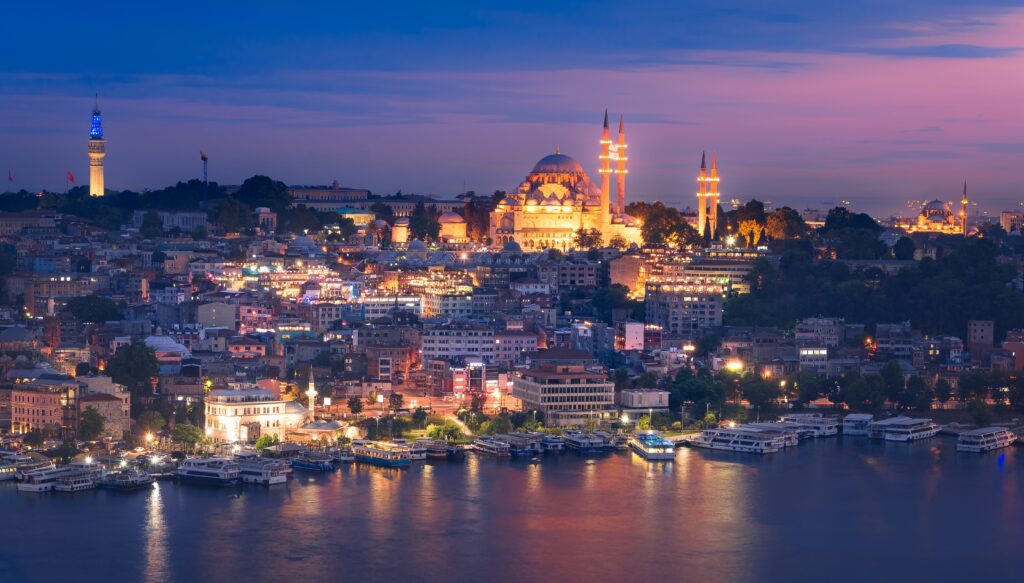
Daniel Stables
Gazing up at Leonardo da Vinci’s Adoration of the Magi in the rarefied corridors of Florence’s Uffizi Gallery, I began to feel unusual. My stomach tightened and my heart raced; my knees buckled and my palms felt clammy. Were the chicken liver crostini from lunch coming back to bite me? Probably.
For some visitors to Florence, though, these are the symptoms of an acute illness that has nothing to do with food poisoning and everything, it would appear, to do with the city’s abundance of great art.
Stendhal syndrome is said to be a psychosomatic condition brought on by exposure to Florence’s embarrassment of artistic riches. It takes its name from the French writer Marie-Henri Beyle, better known by the pen-name Stendhal, who, in 1817, wrote of his trip to the Tuscan capital: “I was in a sort of ecstasy from the idea of being in Florence… I was seized with a fierce palpitation of the heart… the well-spring of life was dried up within me, and I walked in constant fear of falling to the ground.”
The syndrome was clinically described as a psychiatric disorder in 1989 by Graziella Magherini, a psychiatrist at Florence’s Santa Maria Nuova Hospital. Magherini observed 106 patients, all of them tourists, who experienced dizziness, palpitations, hallucinations and depersonalisation upon viewing works of art such as the sculptures of Michelangelo and the paintings of Botticelli. They were suffering “panic attacks, caused by the psychological impact of a great masterpiece, and that of travelling,” Magherini said in 2019.

Famous for its Renaissance art and architecture, Florence is home to numerous museums and galleries (Credit: Norma Crecca/Getty Images)
“It occurs usually 10, 20 times a year in certain people who are very sensitive [and] perhaps have been waiting all their lives to come to Tuscany,” said Simonetta Brandolini d’Adda, president of the art charity Friends of Florence. “These iconic artworks – the Botticellis, the David – they’re really overwhelming. Some people lose their bearings; it can be mind-boggling. I’ve often seen people start crying.”
Some people lose their bearings; it can be mind-boggling. I’ve often seen people start crying
Botticelli’s The Birth of Venus seems to be a particular trigger. “We’ve had at least one epileptic attack before the Venus,” said Eike Schmidt, the director of the Uffizi. “One gentleman also suffered a heart attack.”
That gentleman was Carlo Olmastroni, a 68-year-old man from the Tuscan town of Bagno a Ripoli, who collapsed in the Uffizi in December 2018. “I approached Botticelli’s The Birth of Venus, and while I was admiring that wonder, my memories vanish,” Olmastroni told me. His story was quickly taken up by media in Italy and abroad and positioned as the latest high-profile example of Stendhal syndrome. However, it may more properly serve as an illustration of something else: the media’s hastiness to propagate the romantic idea of Stendhal syndrome, despite it being a difficult condition to pin down. Certainly, in Olmastroni’s case, something else was at play.
“The diagnosis was not Stendhal syndrome, as some thought more romantically, but the occlusion of two coronary arteries. Perhaps, on admiring The Birth of Venus, they decided that there was nothing more beautiful to look at and contracted permanently!” he told me.
Thankfully, Olmastroni made a full recovery – partly thanks to a defibrillator which had been installed the day before his visit, and partly due to the nearby presence of four doctors, including two Sicilian cardiologists who happened to be visiting the Uffizi that day. He calls them his “guardian angels”. Had he suffered his heart attack at home, it might have been a different story; perhaps, far from causing him to fall ill, Florence’s treasure trove of art saved his life.

Every year, tourists are hospitalised after being overwhelmed by the city’s abundance of great art (Credit: Roberto Serra/Getty Images)
The issue that many professionals have with describing Stendhal syndrome as its own psychiatric disorder is that its symptoms are so hard to parse from those of more general afflictions that commonly affect tourists. “Sometimes at the Uffizi, certain visitors have heart attacks, or feel sick,” said Cristina de Loreto, a psychotherapist who lives and works in Florence. “But it could just be being in an enclosed space with hundreds of other people. It could be agoraphobia, not Botticelli.”
An emotional reaction to art, she said, does not constitute a psychiatric disorder, even if it leads or contributes to distressing or dangerous symptoms. “At the moment when you’re observing a piece of art, there are specific brain areas that are activated – it’s like when you see a beautiful man or woman – but it isn’t enough to say it’s a syndrome. It’s not yet validated, and you can’t find it in the DSM-5, our manual of mental disorders.”
Di Loreto believes that something else may be at play: that tourists’ expectations of Florence are so high, fuelled by the ubiquity of its artworks in various media, that it all becomes too much when they finally visit. “It may be a self-fulfilling prophecy, which makes some tourists feel something in the air in Florence,” she said.
In this regard, Stendhal syndrome may be related to Jerusalem syndrome, which sees visitors to that holy city break down in psychotic religious or messianic delusions; and Paris syndrome, which causes tourists to come down with acute psychiatric symptoms upon finding that the French capital does not match their unrealistically high expectations.
Stendhal’s own words – “a sort of ecstasy from the idea of being in Florence” – seem to lend this theory some credence. Perhaps a self-fulfilling prophecy is also at play in the media coverage of alleged cases of Stendhal syndrome, such as Olmastroni’s – journalists, enchanted by the romantic idea of becoming “art sick”, diagnose people wishfully from afar.

Stendhal syndrome was named for the French writer, who in the 19th Century suffered a similar set of symptoms (Credit: Peter Unger/Getty Images)
“Here in Florence, as in Venice, you can breathe art,” Paolo Molino, a psychotherapist, told me over lampredotto (tripe) sandwiches at Florence’s Sant’Ambrogio Market. “Everywhere you turn in the town centre, you stumble on something beautiful. It’s like being slapped in the face.”
Everywhere you turn in the town centre, you stumble on something beautiful. It’s like being slapped in the face
Molino agrees with Di Loreto, though, that it is difficult to describe Stendhal syndrome as a condition in its own right, or to separate its symptoms from those that might befall fatigued, dehydrated or otherwise overwhelmed travellers. His concern lies not so much with the question of Florence killing tourists, but rather with tourists killing Florence.
“Being in Florence is like being in Disneyland for art,” he said. “I don’t like that. I like lived places – I like to come and see the lampredotto guy, to be able to walk without having to fight my way through crowds.” Having lived in Florence since he was a schoolboy, Molino is now one of the majority of Florentines banished to live in a belt around the historical core. “I never go to the town centre if I can avoid it,” he said. “It’s too busy.
I was struck by Molino’s assertion that Florence’s wealth of art – which we value precisely because of what it tells us about life and the human condition – had relegated the city to no longer qualify as a “lived place”. The comparison of the cradle of Renaissance art and humanism with Disneyland, the world’s foremost symbol of corporate artifice and dumbed-down commercialism, was similarly jarring. However, it’s important to remember where much of Florence’s art came from.
Michelangelo and Botticelli did not carve and paint in a dark garret. They were patronised by Florence’s wealthiest and most powerful people who used their artworks as a display of financial and political might. In David’s original position in front of the Palazzo Vecchio, he gazed defiantly towards Rome, the seat of the encroaching Goliaths that were the Medici, an enormously powerful banking family. During the periods when they held power in Florence, it was the Medici themselves commissioning pieces like The Birth of Venus. Botticelli even included the Medici in the roles of the Three Wise Men in his paintings; and the very building that houses the Uffizi Gallery was built by the same family. These people used art to promulgate the mythology around them, consolidating their power and creating, as the philosopher Jean Baudrillard said of the American Disneyland, a kind of hyperreality.

Wealthy patrons such as the Medici family made Renaissance Florence a thriving centre of art (Credit: Carol Yepes/Getty Images)
The Medici are long gone, but the masterpieces they helped bestow on Florence still lend the city something of the unreal and the uncanny. However, Schmidt believes that this is not unique to Florence. “Whenever things like this happen in Florence, it makes the papers,” he said, “but although it’s seen as a Florentine phenomenon, the same could be true of places like Venice and Verona.”
Regardless, as Schmidt pointed out, art for the most part is not a health hazard, but a tonic, for body and soul. “Generally,” he said, “art is good for you – good for your heart and mind.”
Courtesy: BBC
The post Stendhal syndrome: The travel syndrome that causes panic appeared first on The Frontier Post.








